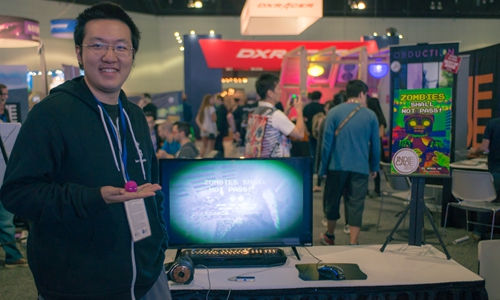Time travel to Beijing over a century ago
By Sun Haoran Source:Global Times Published: 2020/5/11 21:23:41
This is the second time Hu has made such a video. He previously AI-restored a video of Beijing showing city scenes and people's lives during the late Qing Dynasty (1644-1911), which went viral on the internet. The author who colorized and frame repaired the original black and white footage said he did this because he hoped to promote AI technology to ordinary people.
"It took me about seven days to finally finish the work," Hu told the Global Times on May 11.
"The reason why I spent so long on restoring it was because every frame of the video needed to be painted with colors by the computer graphics card, and I needed to adjust certain settings before the computer can generate it by itself, such as telling the computer how many frames I want to get and how clear I want to the footage to be," said Hu.
"But the good thing is that after I told the computer what I needed to do, the AI followed my orders and did the drawings automatically, meaning I don't need to paint the colors by myself at all."

Wengu Eddy Hu, a Chinese independent game producer and artist based in New York, AI-restored original black and white footage of Beijing showing city scenes and people's lives during the late Qing Dynasty (1644-1911). Photo: Courtesy of Wengu Eddy Hu
Hu said he was touched by the original video - filmed by an unknown cameraman touring China -posted by People's Daily on Youtube in 2016 when he first saw it, and was inspired by the 4K high-definition restored film in color of the founding ceremony of the People's Republic of China in 1949 by Russia in 2019.
"I then decided to do time travel by myself."
Hu posted the AI-restored video of Beijing on Bilibili too. In the video clip, the original black and white footage and the colorized one was put together next to each other on the same screen, so viewers can easily see the difference between them.
The video restoration before and after has been greatly improved in terms of color and clarity. The restored one is smoother than the original one and clearly shows the hustle and bustle of city life.
"The AI did the painting all based on its own experience," explained Hu. "It can automatically recognize the colors from a black and white film based on the darkness of each color after letting it see films enough times."
"It can judge the color from its own experience. Although it might not necessarily be 100 percent accurate, the results are usually pretty good in most cases," he added. "The more films the AI sees, the more accurate it would be."
In the video, people are wearing traditional Qing-style winter clothes (mainly blue, black, grey and white) with their Queue hairstyle on the streets of Beijing and many of them are staring at the camera seemingly curious about the device at that time.
Some are waiting for their food at the tables of street venders; some are selling antiques on the streets; some are offering incense and worshiping the gods at a temple. Men bow when they meet each other, while women greet with a traditional Qing-style gesture to show respect.
Hu said he could recognize the Defending Peace Archway and Qian Men (Front Gate), two famous tourist attractions in Beijing, in the video and noted that he has learned a lot about the traditional culture of Beijing through making the video.
"Viewers told me about the history of the archway, the meaning of certain social gestures, and the rules for a funeral," said Hu. "I also edited some sound effects into the video with clips of Beijing folk music from the internet to give it more of a Beijing flavor."
However, Hu admitted that the most difficult part was the accuracy of the restoration. "It's really difficult to tell what traditional Qing-style clothes exactly look like, which is based on a lot of research and a large number of databases."
The video has been viewed about 2 million times and received over 150 thousand likes on Bilibili alone as of Wednesday, and many internet users expressed their gratitude and admiration to the author.
"I never imagined that this video could be so popular on the internet," said Hu, explaining that he made the video to promote and share AI technology to more people.
Hu said that although his life in New York has been affected by the COVID-19 pandemic, he will continue what he is doing now and try to restore black and white films of other cities in China in the future.
Posted in: ASIA-PACIFIC,EYE ON WORLD